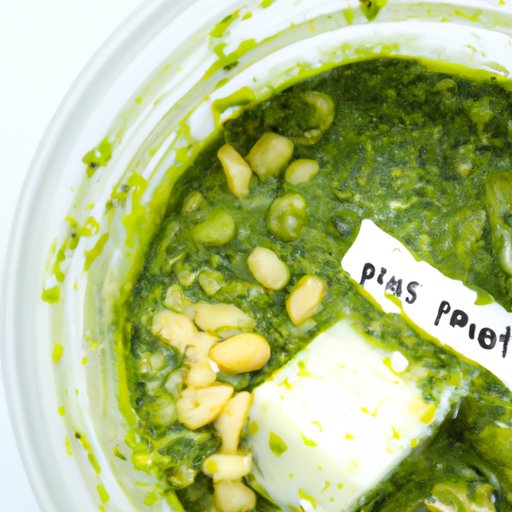Can You Freeze Pesto?
If you are a lover of pesto, you know that sometimes you end up with more than you need. Leftover sauce can be tempting to throw away, but if you’re not ready to say goodbye, you may be wondering if you can freeze pesto. The good news is that you can freeze pesto, and it’s a great way to save it for later without it going bad quickly.
Benefits and Drawbacks of Freezing Pesto
Freezing your pesto can be an excellent way to extend its shelf life. By freezing, your pesto can stay fresh for up to six months, rather than lasting only a few days in your fridge. However, it can also affect the flavor and texture of the sauce. Some people have reported that the pesto’s flavor and color can become less vibrant after being frozen, and the sauce may become more oily and separated. Ultimately, it’s up to you to decide whether the extra longevity is worth it, or if you’d rather enjoy it fresh.
How to Prepare Your Pesto for Freezing
The process of preparing your pesto for freezing is effortless. Here’s a step-by-step guide:
- Clean and disinfect your freezer-safe containers with soap and hot water. Rinse with hot water and dry.
- Use an ice cream scoop or tablespoon to portion out your pesto into the containers. Be sure to leave some room for expansion during the freezing process.
- Smooth the surface of the sauce with a spoon or spatula. Pour enough olive oil over the top of the pesto to cover the surface completely. Cover containers with lids or plastic wrap.
- Using masking tape and a marker, label each container with the date of preparation and type of pesto. Place in the freezer and store for up to six months.
Tips and Tricks for Preserving Flavor
To preserve the flavor and texture of your pesto as much as possible during the freezing process, it’s essential to follow some tips and tricks:
- Before freezing, make sure your pesto is fresh and made with quality ingredients.
- Consider dividing your pesto into smaller portions. It’ll be easier to defrost later if you don’t need an entire container.
- When adding olive oil to the top of your pesto, make sure it’s enough to cover the surface completely. Oxygen can cause freezer burn, so the oil will create a protective layer and help prevent it.
- Consider using freezer bags instead of containers. Make sure to lay them flat to freeze and store them vertically afterward to save some space in your freezer.
Thawing and Reheating Your Frozen Pesto
When you’re ready to use your frozen pesto, it’s essential to take a few precautions to ensure it’s safe to eat. The best way to defrost is overnight in the fridge. Placing the container in a bowl of warm water can also work if you are short on time. Avoid defrosting by leaving the container out on the counter at room temperature, as this can cause bacteria growth.
When you’re ready to use your pesto, you can add it straight to the dish, or you can reheat it first. If you’re using it in a hot dish that will cook for a little while, such as a baked pasta dish or soup, you can add it directly to the recipe. However, if you want to use it in a hot dish that does not cook for long, such as a quick pasta dish, you should heat it first.
Recipe Ideas for Using Frozen Pesto
Now that you know how to freeze your pesto successfully, here are some recipe ideas:
- Pesto pasta: Cook your favorite pasta, add some thawed pesto, and toss until well coated. Top with some parmesan cheese, pine nuts, and fresh basil.
- Pesto chicken: Grill or pan-fry some chicken breasts. Add some thawed pesto to the pan for the last minute of cooking. Serve with some roasted veggies.
- Pesto pizza: Spread some pesto on a prepared pizza crust. Top with mozzarella, cherry tomatoes, and fresh basil. Bake in the oven for about 10-15 minutes or until done.
- Pesto grilled cheese: Spread some pesto on two slices of bread, add your favorite cheese between the slices, and grill until golden brown and melted.
Conclusion
Freezing pesto is an excellent way to avoid wasting the leftovers and save time in future preparations. You might need some trials and errors to find the perfect way that suits personal preferences. Remember to label and date the containers and follow all the tips and tricks to ensure your pesto remains as flavorful and fresh as possible.
